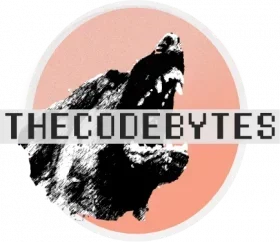Is Python a front-end or back-end language? It’s a good question to be asking. Python is a powerful general-purpose programming language that serves both frontend and backend needs. That being said, Python is much more commonly used on the back end and is usually referred to as such.
However, this completely depends on the context and the tech stack we are looking at. In this article, we are going to explain why Python is such a powerful back-end language and how it also has its place in the front-end development world as well.
What Is Frontend Development?
Front-end development deals with elements or features immediately visible and accessible to the end user or client. These elements are made up of HTML, CSS, & JavaScript. However, both front-end and full-stack frameworks can be used to generate this code. Meaning that yes, even Python can be used on the front end.
What Is Backend Development?
The back end, also referred to as server-side development, is code that happens “behind the scenes”. You can’t directly see it but this is where the code that activates the components on the front end is written. The launch and display of a website’s web page are the results of communication between the client side and the server side.
Back-end responsibilities include, but are not limited to: communication with a database, storing data, encrypting data, and manipulating server files.
What Makes Python A Backend Language?
1. Python Allows Typical Backend Functionality
There are many reasons why Python is a great choice as a backend language. Primarily, Python enables application scalability and it is a portable language that works well on different OS like Mac, Linux, and Windows. This means you can use Python to access server files, communicate with a database, and is a general-purpose programming language that allows you to complete any backend project you could possibly think of.
2. Python Is Object-Oriented
On top of this, Python is also an object-oriented language. Which is an incredibly popular programming paradigm for backend languages. While being much less popular for frontend development. Every major backend language is object-oriented. Including PHP, C#, Java, Python, and Ruby. However, JavaScript, which is the only front-end language, is not natively object-oriented.
3. Python Has Simple Syntax And Strong Backend Libraries
In addition to this, Python is an incredibly popular backend option because of its simple syntax. Meaning you can write backend code faster and easier than other languages, such as PHP.
Python also has a wide array of backend libraries that are available to you with a single PIP command. Allowing you to leverage pre-built and pre-tested code to build your web application faster.
4. Greatest Language For Data Manipulation
Python is one of the best back-end languages because it offers advanced mathematical operations as well as data manipulation. Meaning Python is great for data analysis and data handling. It also includes tools like NumPy, a free library for numerical computation, and libraries like Pandas, which offer control over data manipulation. Both of these can be incredibly useful when creating advanced back ends.
5. Many Backend Python Frameworks
Finally, if you choose Python as your back-end language, you have a myriad of great Python frameworks to choose from.

A few of the top frameworks are the following:
- Django
- Flask
- web2py
- CherryPy
- TurboGears
All of these frameworks allow you to build professional back-ends and even front-ends for your web applications. Giving you tons of options for your Python back-end projects.
Why Is Python Not Considered A Frontend Language?
While it is true that Python can be used on the front end, it usually isn’t. Below we have outlined the top reasons why this is the case.
1. Python Front-Ends Depend On Frameworks
Unlike PHP, Python depends on frameworks in order to be used on the front end. You cannot write pure Python on the front end. You would need to use one of the frameworks mentioned above such as Flask, CherryPy, or Django.
Here is a sample snippet of using Django Python code on the front end:
{% extends "base_generic.html" %}
{% block content %}
<h1>Fruits In Groceries List</h1>
<p>Welcome to your fruits grocery list, a website developed by <em>a Django front-end</em>!</p>
<h2>Dynamic content</h2>
<p>The list has the following fruit record counts:</p>
<ul>
<li><strong># of Fruits:</strong> {{ num_fruits }}</li>
<li><strong>Fruits available:</strong> {{ fruits_available }}</li>
<li><strong>List Owner:</strong> {{ author }}</li>
</ul>
{% endblock %}context = {
'num_fruits': num_fruits,
'fruits_available': fruits_available,
'author': author,
}
return render(request, 'index.html', context=context)As you can see, writing Python code on the front-end is completely possible. However, without frameworks like Flask or Django, Python does not naturally integrate with technologies like Hypertext Markup Language (HTML), JavaScript, and Cascading Style Sheets (CSS). All of which make up front-end development. This brings us to our second point.
2. Pure Python Cannot Run In The Browser
Python does not yet support WebAssembly (Wasm) runtime compilation, a widely adopted IC3 web application standard that converts code written in Rust, C, C++, and Go into a binary format.
This is what enables web apps to behave more like desktop applications when used outside of the browser. If you want to run Python scripts in the browser alongside JavaScript and have two-way communication between your code, you’ll need to use PyScript.
Wrapping Up
From the points mentioned above, it is obvious that Python functions better as a backend language than a frontend language.
The language is a portable, general-purpose programming language that allows typical backend functionality, superb data manipulation, an object-oriented paradigm ideal for back-end development, simple syntax, and countless libraries and frameworks.
On the other side, pure Python cannot be written on the front end and must rely on frameworks to generate the appropriate HTML, CSS, and JavaScript needed to make front-end development possible. Making it a not-so-ideal language for writing client-side code.
If you’re interested in learning Python, here are some great videos.
Happy coding!
